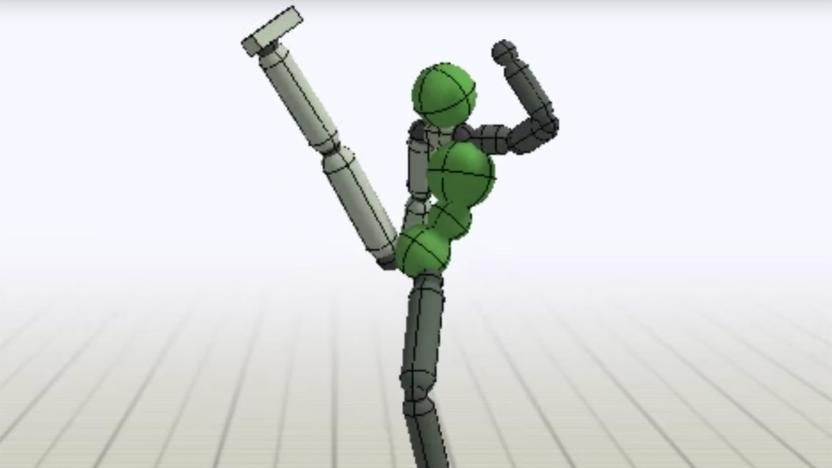UniversityOfBritishColumbia
Latest

AI stuntpeople could lead to more realistic video games
Video game developers often turn to motion capture when they want realistic character animations. Mocap isn't very flexible, though, as it's hard to adapt a canned animation to different body shapes, unusual terrain or an interruption from another character. Researchers might have a better solution: teach the characters to fend for themselves. They've developed a deep learning engine (DeepMimic) that has characters learning to imitate reference mocap animations or even hand-animated keyframes, effectively training them to become virtual stunt actors. The AI promises realistic motion with the kind of flexibility that's difficult even with methods that blend scripted animations together.

Fizzy microparticles may save lives on the battlefield
Battlefield medics and paramedics rely on chemical-infused bandages to help stem blood loss and treat wounds. However, the blood itself is frequently their worst enemy -- it takes those chemicals away from where they're needed. Those first responders may soon have a much smarter solution, though. Researchers have developed bandages with a combination of powdered marble, acid and enzymes that fizzes on contact with blood, using the resulting bubbles to transport microparticles toward deeper vessels that need clotting. The particles currently travel in all directions, but scientists envision using an endoscope to send the fizz to where it's most useful.

A pulse oximeter that works with your iPhone
Together the Electrical and Computer Engineering in Medicine (ECEM) research group and the Pediatric Anesthesia Research Team (PART) at the University of British Columbia have developed a pulse oximeter that works with the iPhone and other mobile devices. The instrument is meant to be used at home by people with respiratory problems and can measure both your pulse rate and blood oxygen saturation. Readings are stored and sent over the internet to your doctor's office or the hospital. The research team has already used the iPhone version of the oximeter in trials at Vancouver General Hospital and in Uganda. Read on for a campy video that shows the pulse oximeter in action. Pulse oximeters are vital tools in emergency and trauma medicine and in the treatment of respiratory illness like COPD or emphysema, as they can measure the relative level of oxygenation in a patient's blood in a non-invasive manner. Consumer-grade standalone units are available for less than $50.

Phone Oximeter saves lives, puts Journey's lawyers on red alert (video)
We'll be honest with you, we don't know a lot about marketing healthcare devices to everyday people, so perhaps posting a goofy YouTube video with some re-written classic rock songs is standard practice in the industry. Whatever the case, the University of British Columbia's Electrical & Computer Engineering in Medicine team managed to bring its Phone Oximeter to our attention, and all said, this could be a handy little device for monitoring vitals outside a hospital setting. The meter hooks up to a smartphone -- an iPhone for trials, but we're told it works with Android, Windows, and others -- displaying the wearer's blood oxygen level and heart and respiratory rates, and transmitting the readings to the hospital. The department has already done some field testing with the system, trying it out at the Vancouver General Hospital and bringing it to Uganda, where low cost medical devices and Journey spoofs are in high demand. Video probably only meant for its creators' friends and family after the break. [Thanks, Walter]


